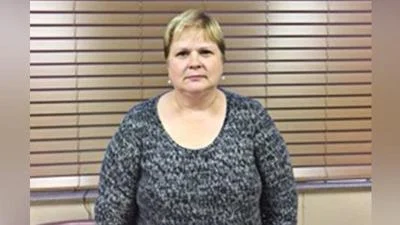USDA Invests in Critical Infrastructure to Lower Costs, Create Jobs, and Combat Climate Change Across Rural Wisconsin | pixabay.com
USDA Invests in Critical Infrastructure to Lower Costs, Create Jobs, and Combat Climate Change Across Rural Wisconsin | pixabay.com
USDA Invests in Critical Infrastructure to Lower Costs, Create Jobs, and Combat Climate Change Across Rural Wisconsin
Department Makes Funding Available Under the Inflation Reduction Act to Expand Renewable Energy in Rural Communities
U.S. Department of Agriculture (USDA) Rural Development State Director for Wisconsin Julie Lassa today announced USDA is investing $643,629 in critical infrastructure to lower energy costs, expand access to clean energy for people across rural Wisconsin, and combat climate change.
“When the USDA invests in renewable energy, we help rural residents and businesses build more resilient and thriving communities,” Lassa said. “The projects announced today in Wisconsin not only demonstrate our commitment to tackling climate change, but they expand access to renewable technology while creating good paying jobs and saving people money on their energy bills.” [Audio: Mp3, 481 KB, 20 seconds]
In Wisconsin, USDA is making 38 investments through the Rural Energy for America Program. This program helps farmers, ag producers and entrepreneurs purchase and install renewable energy systems and make energy efficiency improvements. It reflects the many ways USDA Rural Development helps agricultural producers and rural small businesses lower energy costs.
For example:
Handy Art Inc., a rural small business in Milton, Wisconsin, will use a $110,322 grant to install a solar electric array. This project is expected to save $22,991 per year. It will replace 244,583 kilowatt hours (kWh) (70 percent of the business’s energy use) per year, which is enough to power 22 homes.
Babler Inc., a rural cheese producer in Cascade, Wisconsin, will use a $44,363 grant to install a solar electric array. This project is expected to save $9,407 per year. It will replace 146,980 kilowatt hours (kWh) (four percent of the business’s energy use) per year, which is enough to power 13 homes.
West Star Farm LLC, an agricultural producer in Cottage Grove, Wisconsin, will use a $33,442 grant to install three small solar electric arrays. This project is expected to save $10,162 per year and will replace 99,385 kilowatt hours (kWh) (100 percent of the business’s energy use) per year, which is enough to power nine homes.
Perlick Distillery LLC, a distillery in Sarona, Wisconsin, will use a $33,250 grant to install a solar panel array. This project is expected to save $6,298 per year. It will generate 78,513 kilowatt hours (kWh) (100 percent of the company’s energy use) per year, which is enough to power seven homes.
Gross Buick Inc., a car dealership in Marshfield, Wisconsin, will use a $20,000 grant to purchase and install a 93.72- kilowatt (kW) solar array. This project will realize $7,537 per year in savings and will replace 97,879 kilowatt hours (kWh) (57 percent) per year, which is enough electricity to power nine homes.
USDA also announced today that it will make $300 million available under the Rural Energy for America Program to expand renewable energy and support energy-efficiency projects for people living in rural America. This funding includes $250 million provided by the Biden-Harris Administration’s historic legislative package known as the Inflation Reduction Act. The deadline to apply for grants is March 31, 2023. Applications for technical assistance grants are due Jan. 31, 2023. Applications for loan guarantees are accepted year-round.
Interested applicants are encouraged to contact their local USDA Rural Development State Energy Coordinator well in advance of the application deadlines to discuss their project and ask any questions about the REAP program or the application process. Additional information on the required materials and how to apply for the REAP program are available in the December 15, 2022, Federal Register.
Background:
The Rural Energy for America Program investments announced today reflect the goals of the Biden-Harris Administration’s Inflation Reduction Act.
In August, Congress passed the Biden-Harris Administration’s historic legislative package known as the Inflation Reduction Act (IRA) to reduce energy costs for families and create thousands of good-paying jobs for people across rural America. IRA represents the largest single investment in rural electrification since the passage of the Rural Electrification Act in 1936.
The Act provides funding to USDA Rural Development to help eligible entities purchase renewable energy and zero-emission systems and make energy-efficiency improvements that will significantly reduce greenhouse gas emissions. For example, it provides:
Up to $1 billion for RUS loans for renewable energy infrastructure; up to $2.025 billion for the RBCS Rural Energy for America Program (REAP), with $303 million set aside for underutilized technologies and technical assistance.
Up to $500 million in RBCS grants for infrastructure improvements to blend, store or distribute biofuels. This includes installing, retrofitting or upgrading dispensers for ethanol at retail stations as well as home heating oil distribution centers.
Up to $9.7 billion for RUS to offer loans, grants, loan modifications and other financial assistance to support the purchase of renewable energy systems, zero-emission systems and carbon capture systems.
This commitment to cleaner energy will help USDA Rural Development provide resources to reduce climate pollution and ensure that rural people and their communities have access to a clean, secure energy supply to keep people and economies prepared for the future.
Under the Biden-Harris Administration, Rural Development provides loans and grants to help expand economic opportunities, create jobs and improve the quality of life for millions of Americans in rural areas. This assistance supports infrastructure improvements; business development; housing; community facilities such as schools, public safety and health care; and high-speed internet access in rural, Tribal and high-poverty areas. For more information, visit.
Original source can be found here.






 Alerts Sign-up
Alerts Sign-up